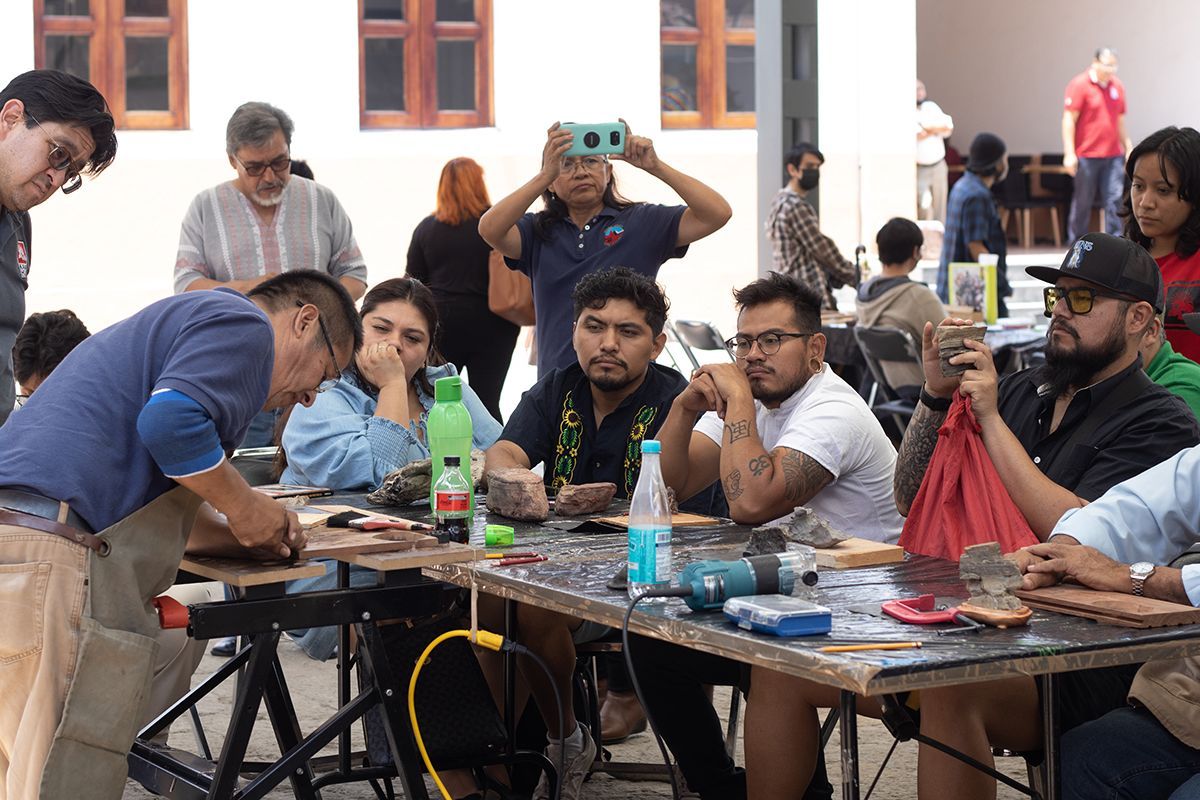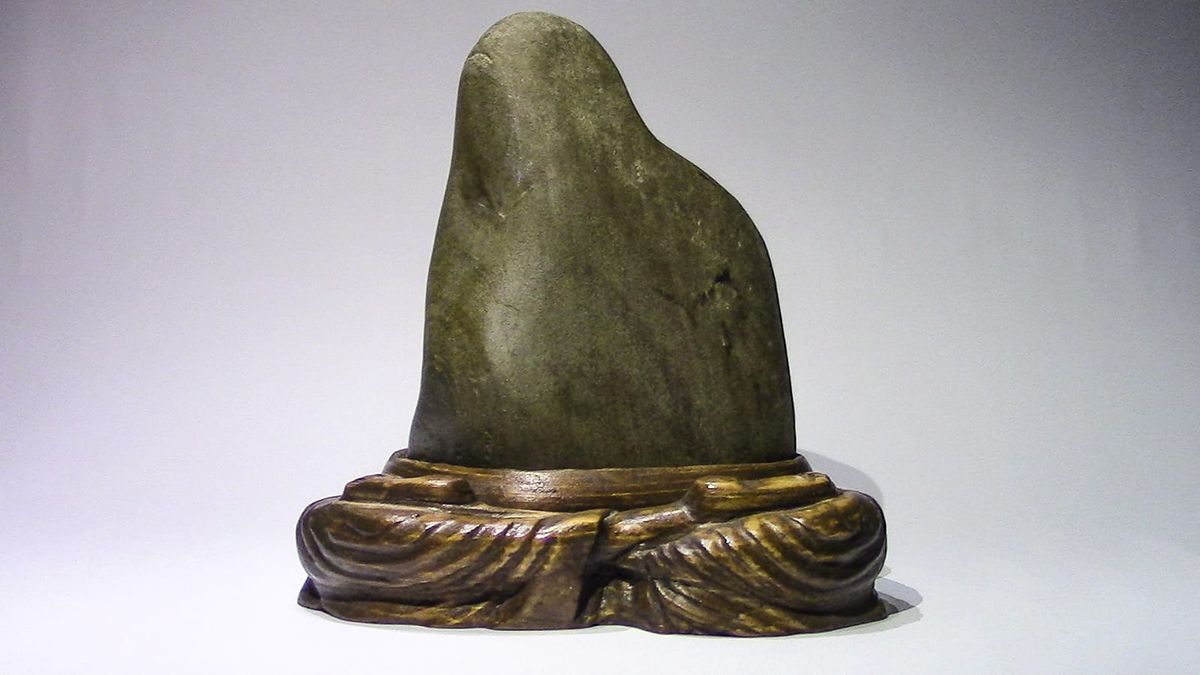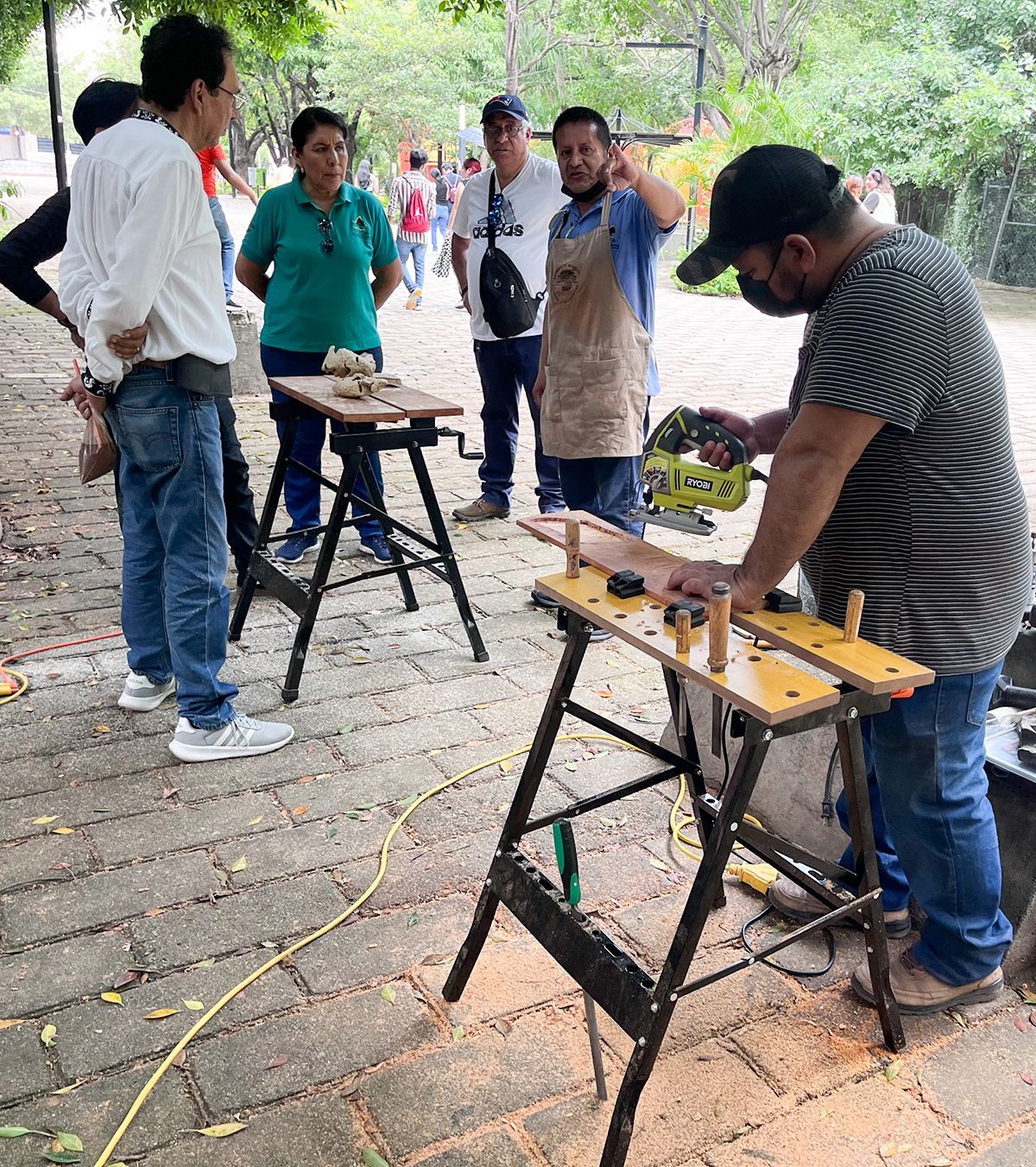North America Viewing Stones: Mexico
Suiseki and Viewing Stones in Mexico
By Eng. Lorenzo Contreras February, 2024
In Mexico, the concept of suiseki and Japanese art came hand in hand with the introduction of bonsai. Matsumoto Tatsugoro (1861-1955) was the first person to introduce bonsai. He was a Japanese landscape architect and businessman known for his work in America, especially in Peru and Mexico. His designs in Mexico City gave rise to the large number of Jacaranda trees (Jacaranda mimosifolia) that are present in Mexico City. It was in 1897 that Mr. Matsumoto brought the first bonsai to Mexico.
Tatsugoro’s son, Tanshiro, brought a new shipment of bonsai trees to San Vicente Texcoco, Mexico, in 1953. However, the art of bonsai became more developed in the 1960s due to several people who are credited with the popularization of bonsai in Mexico. They included Chery Cortez and Ramiro Blancarte in Guadalajara and Emigdio Trujillo and Gustavo Treviño in Mexico City.
In 1984, Chery Cortes and Ramiro Blancarte and others created the Calli Bonsai Club in Guadalajara. A year later, in 1985, Emigdio Trujillo wrote his first Spanish language bonsai book in Mexico. The first Bonsai Association in Mexico was established ten years later, in 1995.
Since the 1990s, more bonsai clubs appeared in different cities in Mexico. At this time, some very rare suiseki specimens began to be seen accompanying bonsai in different exhibitions. At that time, the accompanying pieces had been purchased mainly abroad, while the richness of the existing Mexican rocks remained hidden.
The art of bonsai developed quickly. In 1998, the Guadalajara Bonsai Club was founded. Emigdio Trujillo created the Mexican School of Bonsai Art in 2004, and in 2005 the Mexican Bonsai Federation (Femxbo) was born. Three years later, in 2008, the Tatsugoro Bonsai Museum was founded by Don Miguel Ross in Fortín Veracruz. This was followed in 2010 with the establishment of the Mexican Confederation of Bonsai Art by Eng. Arturo Collzo and Eng. Emigdio Trujillo. Recently, the Congresses of the Latin American Bonsai Federation (FELAB) were held in Merida in Yucatan by Enrique Castaño and in Puebla by Fernando de Ita, José Cordero, and Emigdio Trujillo.
As you will see, the history of bonsai in Mexico is in its infancy, while the history of suiseki is barely emerging. Jose Rayo from Cuernavaca in Morelos was one of the people who helped establish suiseki in Mexico. Mr. Rayo participated in some exhibitions between 2010 and 2013.
The first suiseki event occurred in Mexico in 2011. The bonsai clubs in Chiapas and Shihai held displays in Chiapas and Puebla. Chiara Padrini from Italy was the first foreign suiseki teacher to be invited to Mexico to judge Mexican stones. In the Puebla exhibition, Engineer Lorenzo Contreras emerges on the scene. His suiseki “Nocturnal Mantle” won the best in the show award.
In the exhibition in Chiapas, Eng. Ramòn Clavero Lòpez from Sonora and Eng. Carlos Amador attended the first suiseki workshop in Mexico taught by Padrini. Eng. Amador won the best-in-show award at the exhibition in Chiapas.
After this event, Eng. Contreras became the primary promotor of suiseki in Mexico. He accomplished this mainly by participating in many bonsai events and looking for venues to display suiseki. Contreras succeeded in staging suiseki exhibitions in central Mexico and the National University of México (UNAM), Japanese Mexican Association, the Institute of Geology of the UNAM, and many bonsai clubs in Mexico.
In 2013, the Club Suiseki Ehecatl-México (CSEM) was founded by Lorenzo Contreras, Josefina Mendoza, and Axel Contreras in central Mexico. A few years later, in 2019, Alfredo Rodriguez and Eunice Romero joined the Suiseki Mexico Club. They have been collecting rocks in Central Mexico and making daiza. The expanded club continued to learn about daiza making and how to improve their display skills at exhibitions.
Several members of the Club Suiseki Ehecatl-México traveled to Guadalajara in 2019 to teach a workshop on making diaza to the Guadalajara Bonsai Club members. One of the Guadalajara club members, Mr. Jesús Briseño, excelled at learning daiza making. Since that time, he has been making daiza for stones collected by fellow club members.

Lorenzo Contreras (left) demonstrating techniques to make a daiza.

Flor de Loto. Jesus Briseno
Gavilan, Jesus Briseno
Several members of the Club Suiseki Ehecatl-México participated in the Bonsai and Suiseki Aillance of the Philippines online suiseki competition in May 2020. The Mexican participants won three awards--two bronze and one silver. The awards were given by an international panel of judges consisting of Budi Sulistyo (Indonesia), Bui Duc Tam (Vietnam), and Nigel Atkinson (Australia). Over 1,000 stones, mainly from Asia, were submitted for this competition.
There are several well-known stone collectors in various states in Mexico. Among these are Chery Cortes, Alejandro Arellano, Saul Hernández, Ricardo Marin in Guadalajara, Enrique Castaño in Yucatan, and Gabriel Moreno in Cancun.
An agreement of understanding between Mexico and the Philippines was signed on March 2022, in Quezon City, Philippines, and Mexico City. Mr. Anthony Gedang, who represents the Artiste Museum and the Natural Stone Society of the Philippines, participated in the signing event. Eng. Lorenzo Contreras, President of Suiseki Ehecatl México; Emigdio Trujillo (John Naka Bonsai Museum) in Puebla, and Miguel Ross, Owner of the Tatsugoro Bonsai Museum represented Mexico. This agreement provided for some collaborative activities between the two countries.
Several members of the Club Suiseki Ehecatl-México participated in an international 2022 Small Stone Contest sponsored by the VSANA (Viewing Stone Association of North America.) The judges chose nine Mexican stones submitted by three club members to be published in the book Small Stones, Worlds Apart. This demonstrates that viewing stones collected in Mexico are world-class.
Later, in 2022, a daiza-making workshop was held in the city of Texcoco to teach participants of the Tochnihuan Bonsai Club in Texcoco in the state of Mexico. As a result, several nice daiza were made for rocks that were collected.

A year later, members of Suseki Ehecatl Mexico participated in the joint ASPAC and WBFF congress in the Philippines. We spoke at the congress about Mexican stone appreciation. The book Mexico and the Philippines Kindred Cultures was published in June 2023.
A suiseki workshop was held in the city of Tuxtla Gutiérrez in Chiapas state. The participants searched for rock specimens, cleaned prepared rocks, and made daiza for them. We participated in the Bonsai Chiapas Club exhibition on the club's 15th anniversary.
Last year, we had the honor of hosting Mr. Anthony Gedang, president of the NSSP (Natural Stone Society of Philipines) and owner of the Artiste Museum in the Philippines. Mr. Gedang visited Mexico to learn about the work of bonsai and suiseki at the John Naka Bonsai Museum, Tatsugoro Bonsai Museum and Club Suiseki Ehecatl-México. His visit lasted three days. During this time, we exchanged information, shared knowledge, and had important lessons for suiseki or viewing stones and for bonsai.
Engineer Lorenzo Conteras
I began my activities with the contemplation of rocks approximately fifteen years ago. I attended some bonsai exhibitions in Mexico, and participated in social networks like Facebook. This helped me to get in touch with this beautiful art that has captivated me ever since. Due to my professional training as a geologist, I felt a natural attraction to this traditional Japanese art.
At the same time, I realized that several of the rocks that I had collected for years served perfectly as appreciation rocks, as I began my knowledge by researching the subject on the Internet. At the same time, I received a gift from my friend Emigdio Trujillo, a book, The Japanese Art of Looking at Stones by Vincent T. Covello and Yuji Yoshimura.
At the same time, I began to follow the works of the master Rafael Monje from Spain and the great Italian and European masters. My views of the pages of Japanese sites and those from other parts of the world began to give me clues about the culture of rock appreciation in the world.
In 2014, on a trip to Los Angeles, I coincided with an exhibition at the California Aiseki-kai and had the pleasure of meeting a great teacher and lover of viewing stones, Mr. James Greaves. He kindly gave me a copy of his book American Viewing Stones, Beyond the Black Mountain, Colors, Patterns, and Forms. As his book says, this gave me a new perspective on rock appreciation, understanding that there is not only Japanese suiseki.
Later, I had the fortune of meeting the admired Tom Elías, a great among the greats, who gave me the opportunity to publish some of our rocks in his book Small Stone, Worlds Apart.
At the same time, I met my great friend Anthony Gedang through the networks, with whom we have strengthened a great friendship, concluded in a collaboration agreement between Mexico and the Philippines, materializing with the publication of the book Mexico and the Philippines, Kindred Cultures” and one love for viewing stones.

